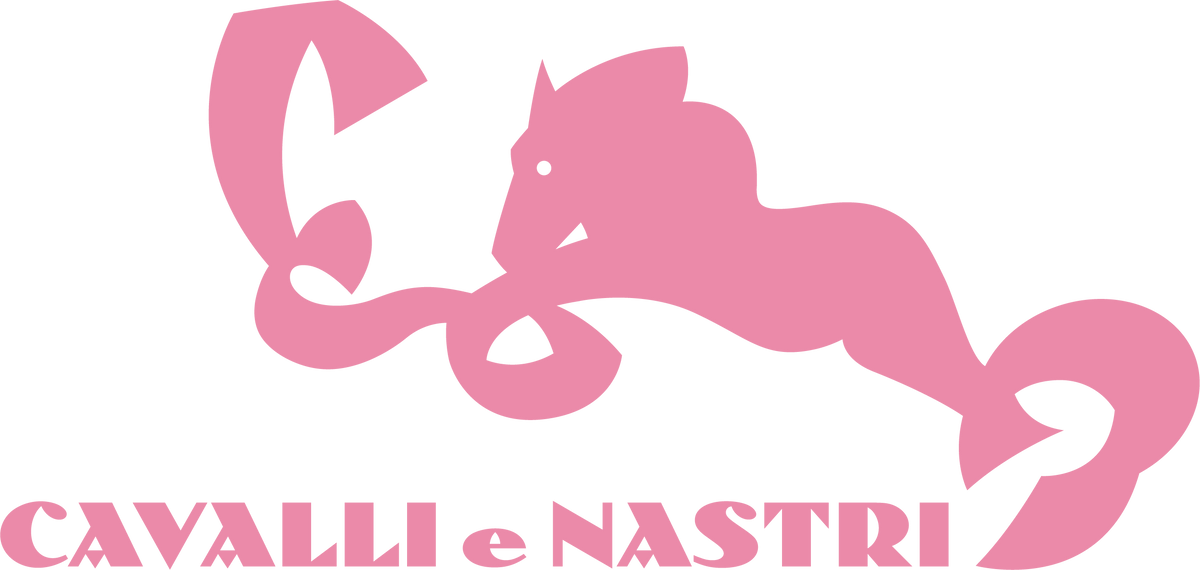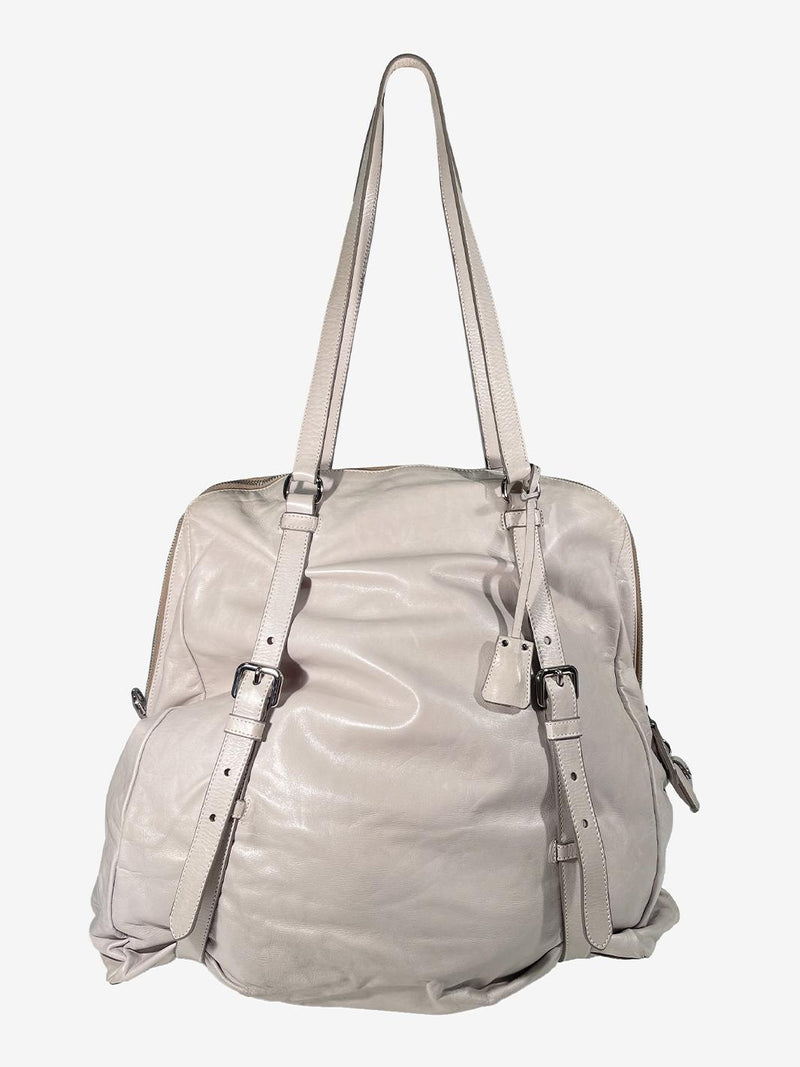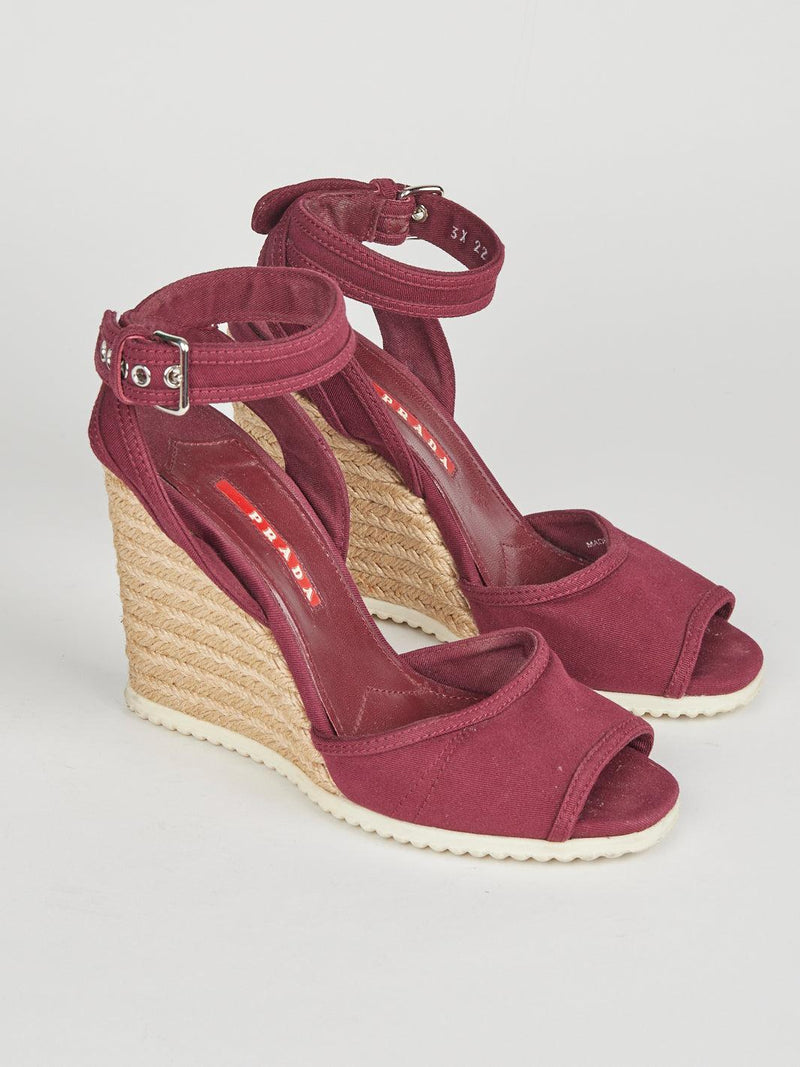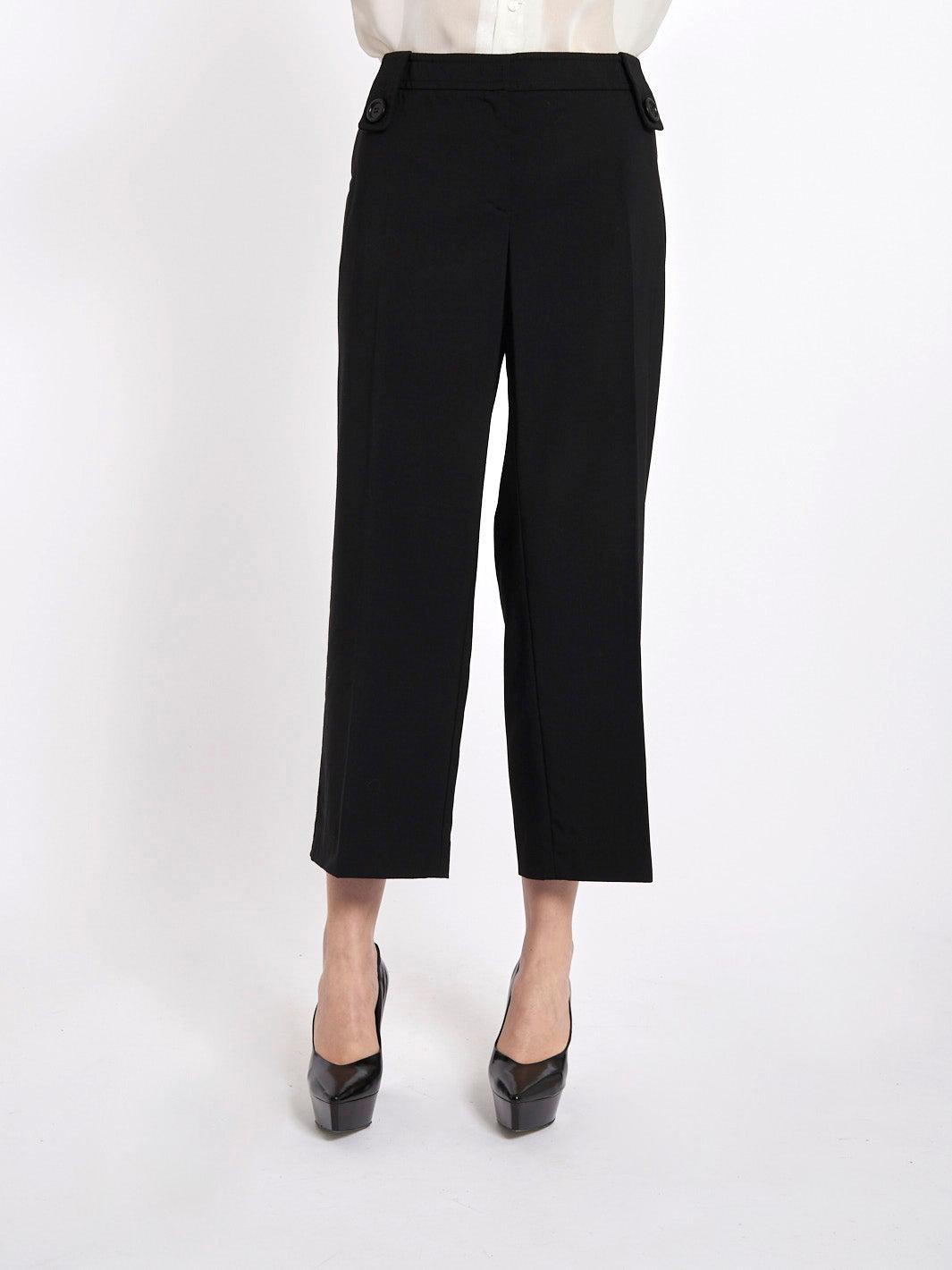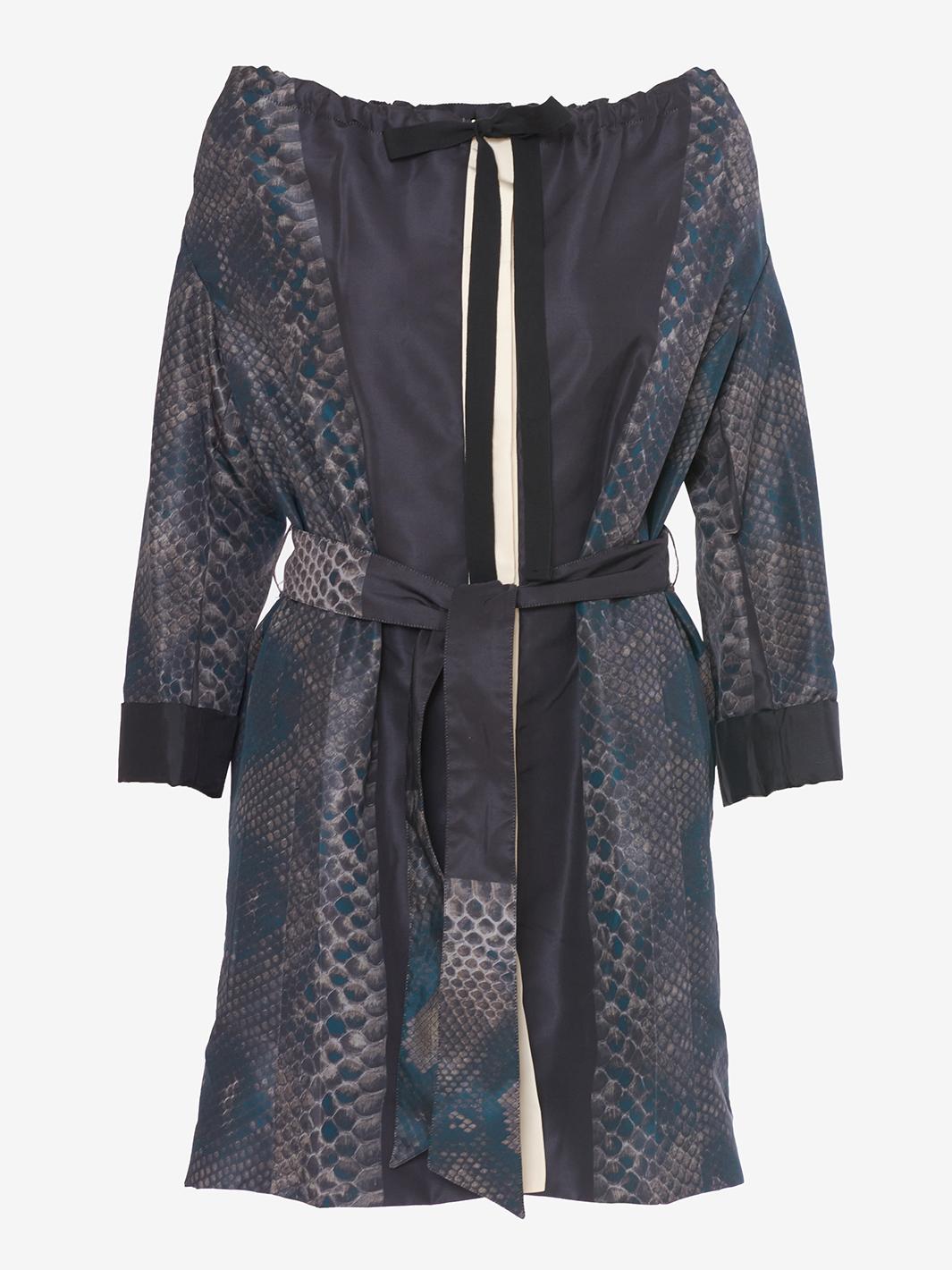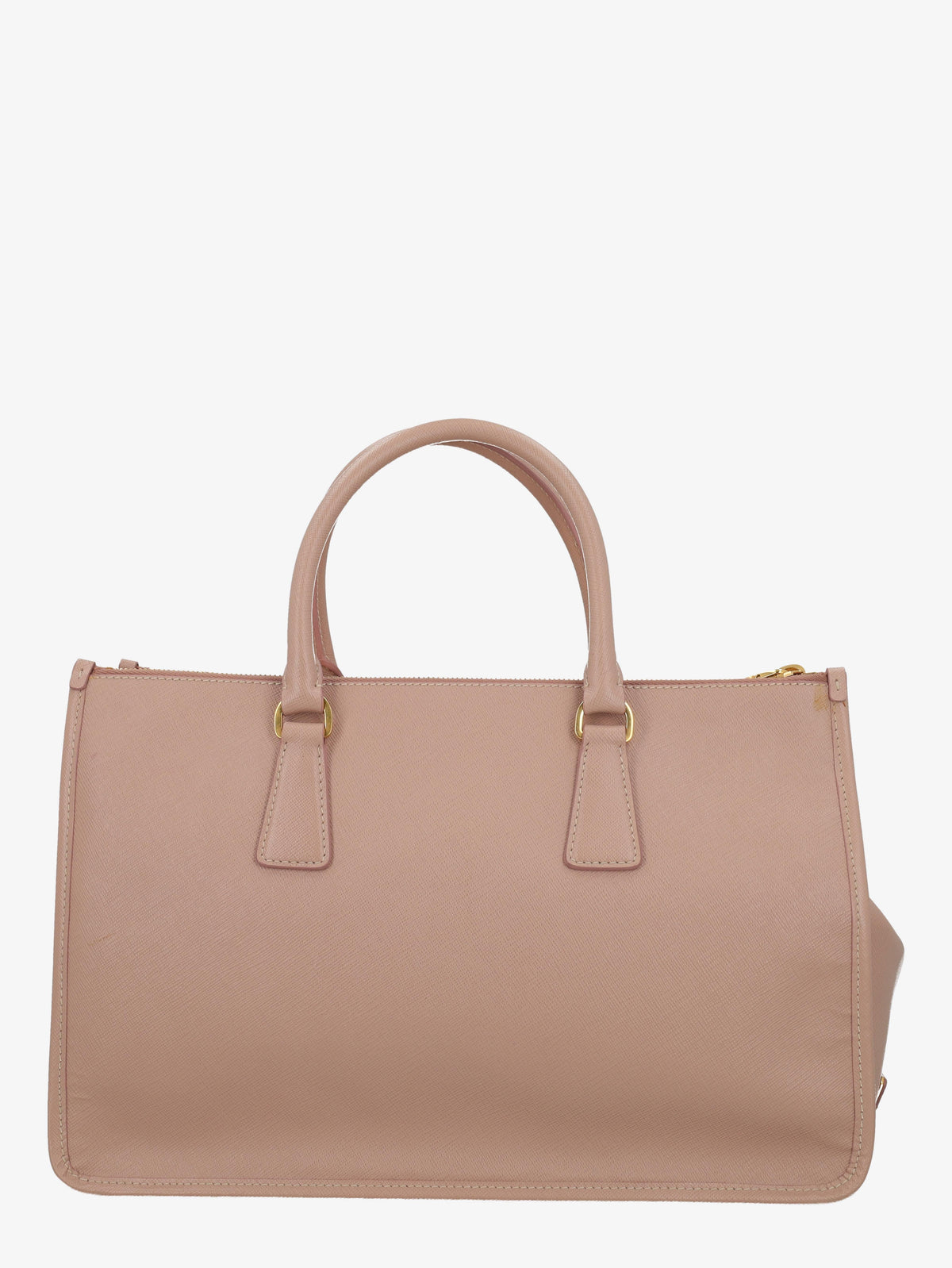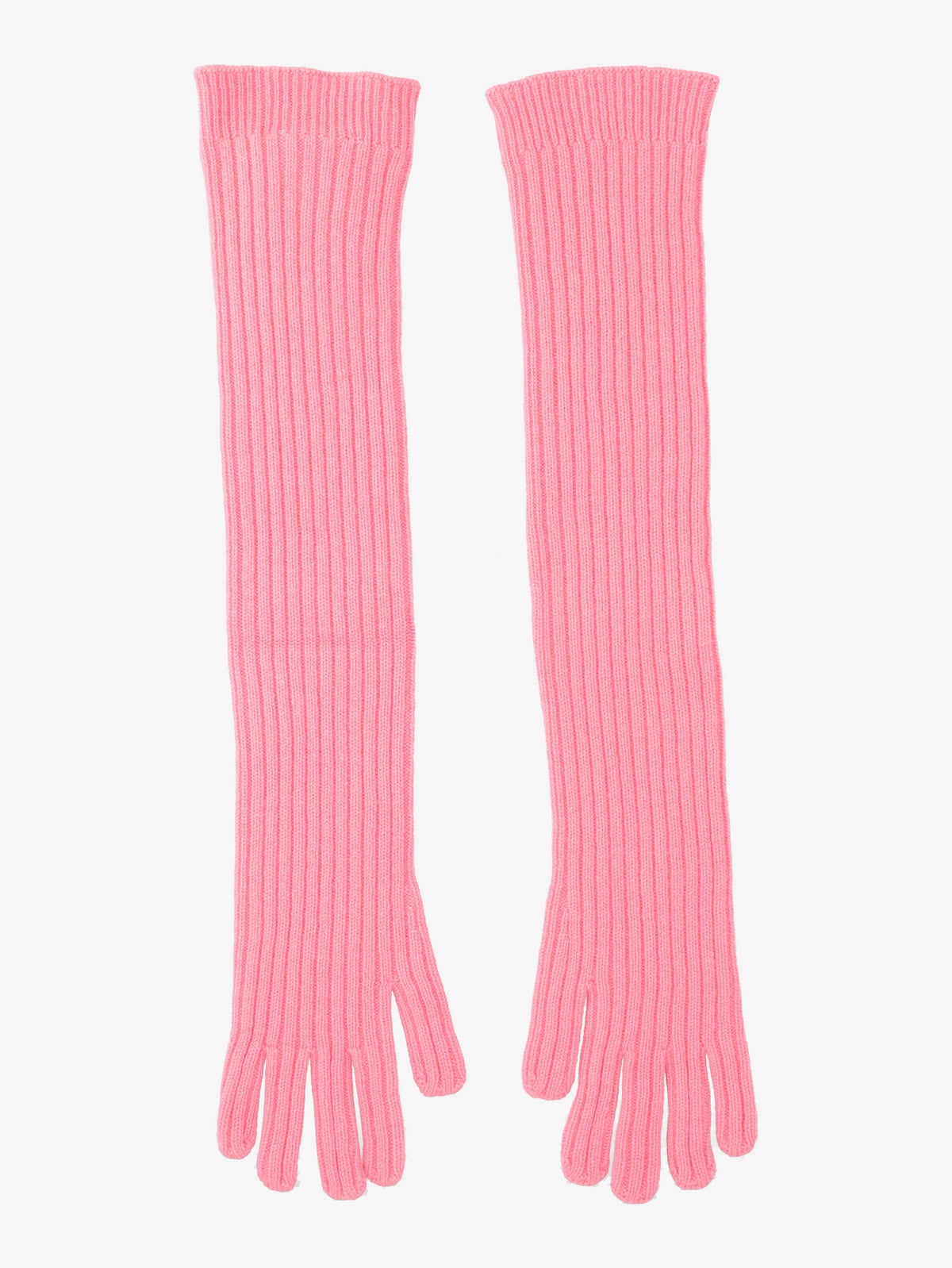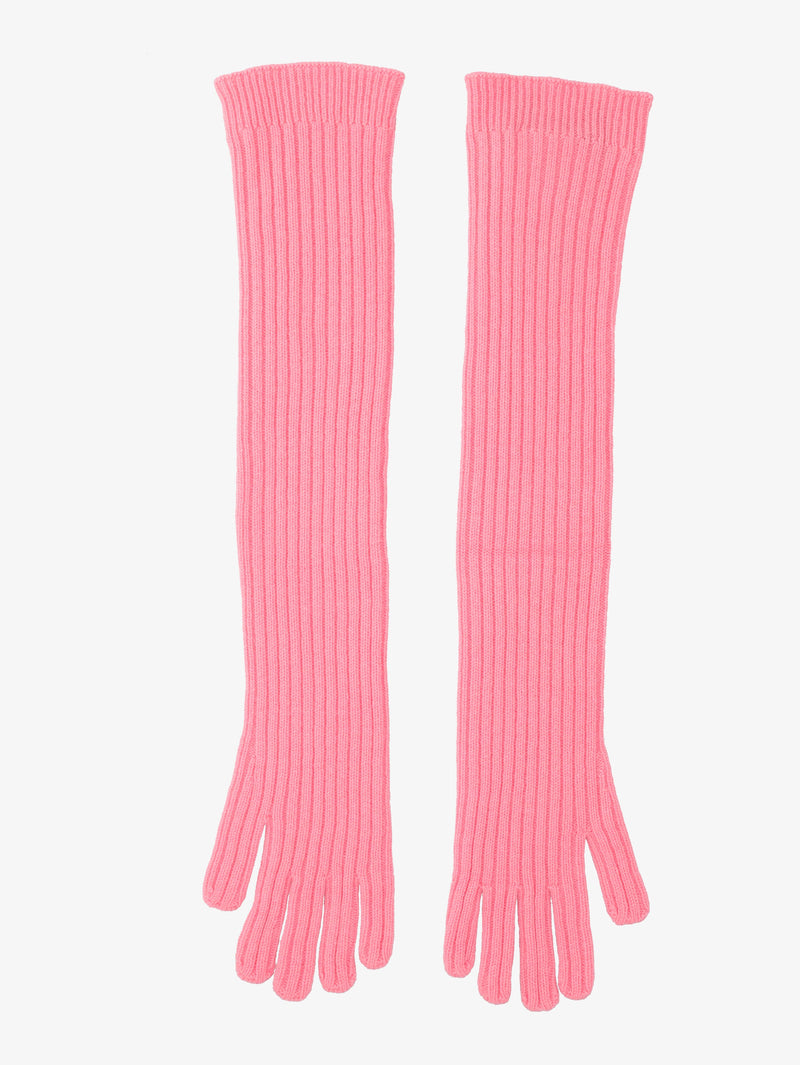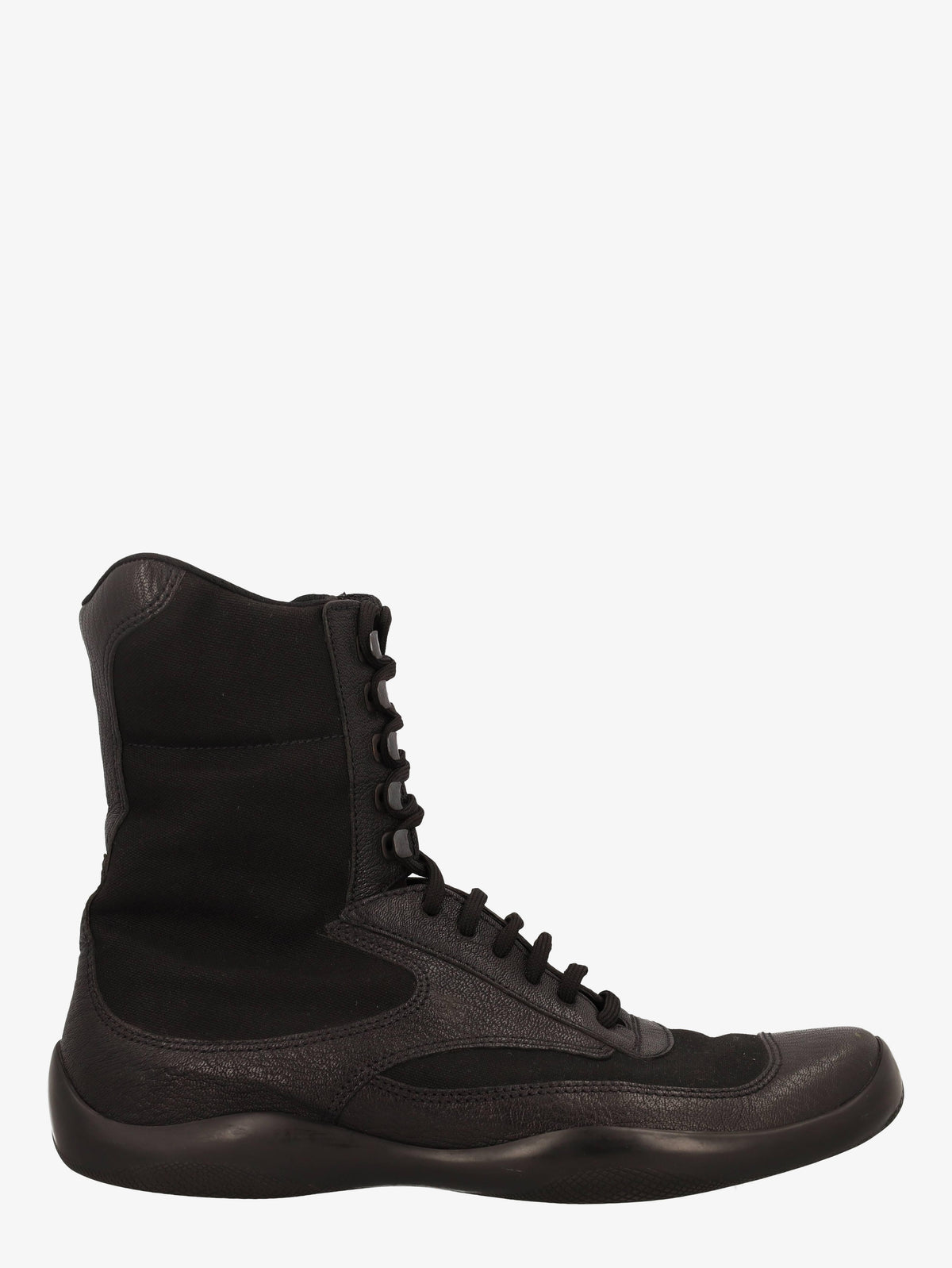PRADA AND THE HISTORY OF ITALIAN FASHION – NON VINTAGE VINTAGE
The story of Prada, as in both “story of Miuccia Prada” and “story of Prada the brand” is pretty much the story of Italian fashion.
It is quite impossible to imagine contemporary fashion without the Nineties Ugly Chic, without the nylon bags and skirts, or without that conceptual minimalism, nodding at both local bourgeoisie and international revolutions, that eventually succeeded into crowning Miuccia Prada as undisputed queen of Ready-to-wear.
Her clothes are never in fashion, rather they dictate fashion, to a point that owning vintage Prada means looking back at fashion’s history while at the same time anticipating new trends.
Platform- sandlas worn with men's socks, school uniforms in muddy greens and browns, geometric prints that look like old tablecloths, shirts buttoned all the way up to the neck, granny-style sleeveless vests worn on naked skin, puffy headbands, pleated skirts… all brand’s essentials, bringing together both fashion’s past and its present.
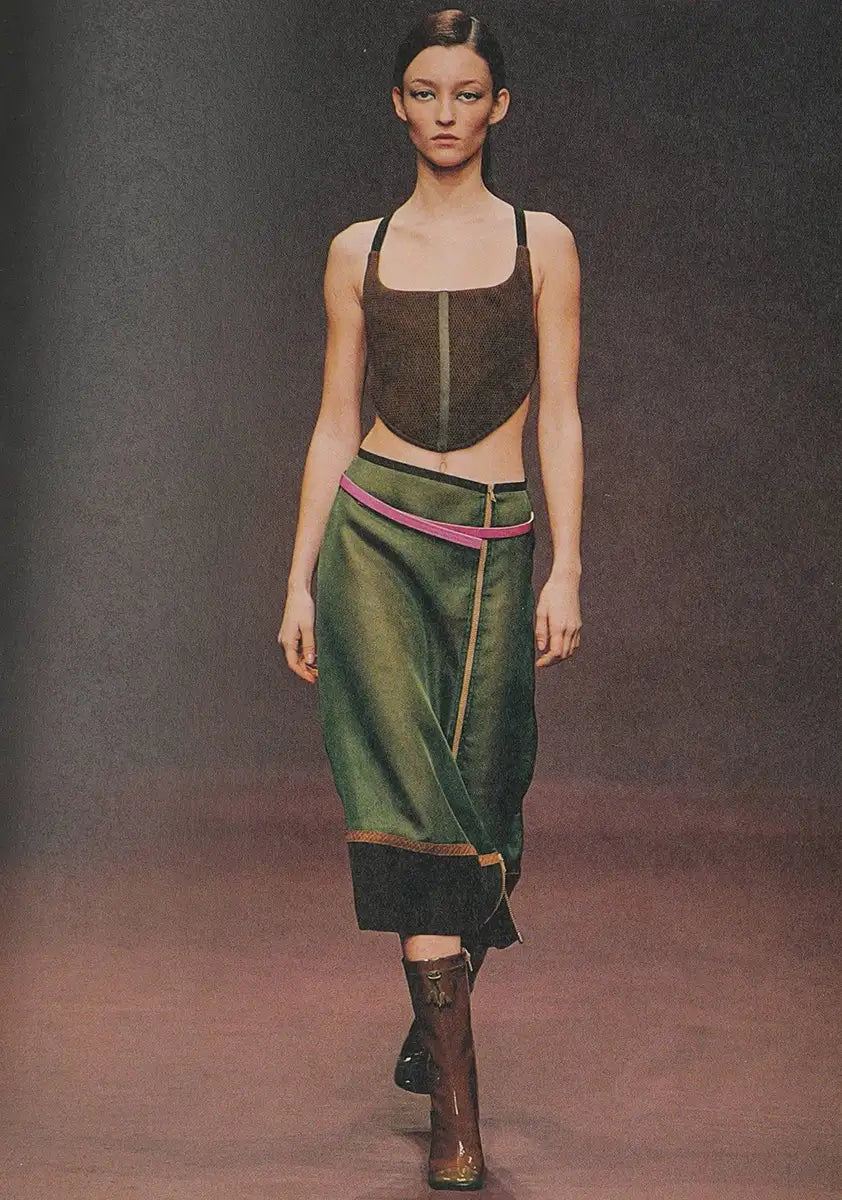
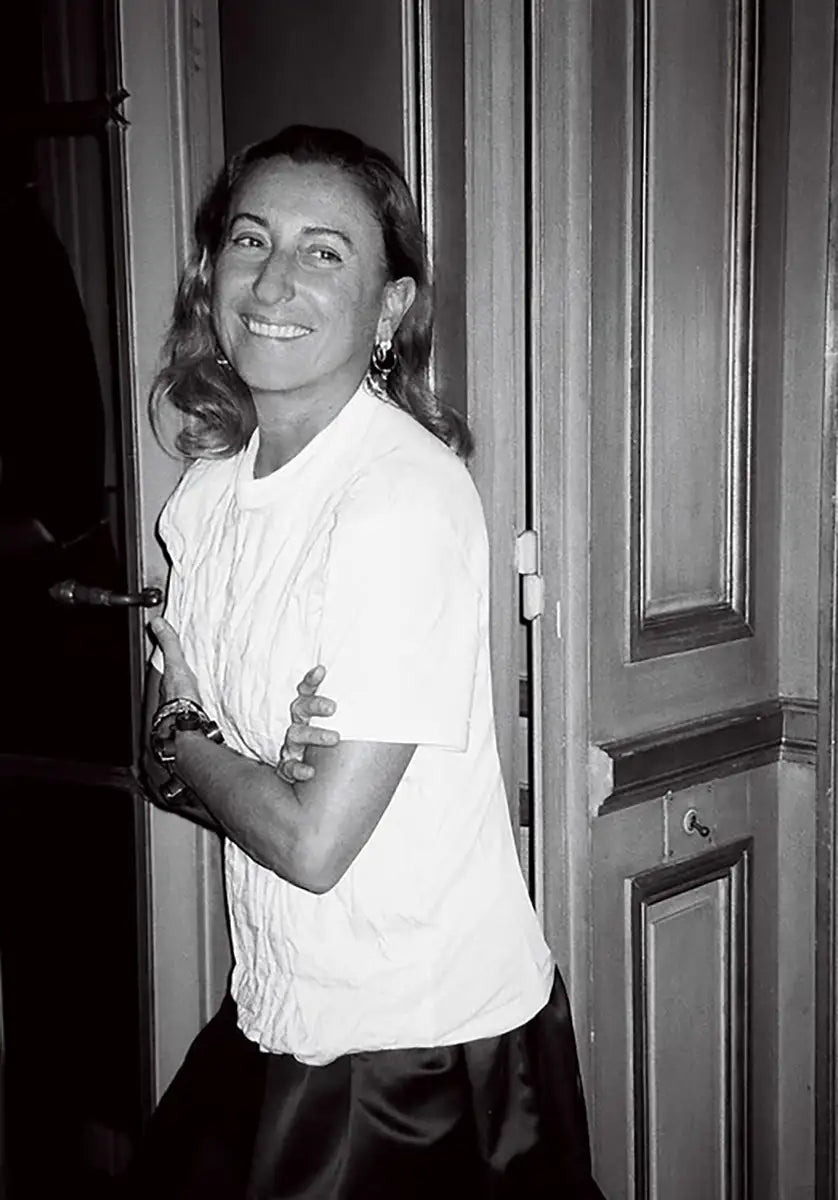
MIUCCIA ENTERS PRADA
The label Prada was born in 1913, way earlier than Miuccia, when Milanese luxury artisan Mario Prada opened a leather goods store right in the center of Milan, in Galleria Vittorio Emanuele II.
Mario’s niece Miuccia is a bourgeois good girl gone wild, on the proper side of the late Sixties students’ revolutions, enrolled in both the local drama school and in the Communist Party. She dreamed of becoming an actress, but instead in 1978 she ended up entering the family business. Together with her husband and business partner Patrizio Bertelli, in twenty years she transformed Prada into a leading Made in Italy luxury group, competing with names such as Louis Vuitton, Chanel, Hermès and Gucci.
The early Eighties were the years of the Nylon Bags, a fabric originally used by the military for parachutes that Miuccia blends with silk and other precious materials. In 1983 the first of a long series of Green Stores opened its doors in Milan, designed by architect Roberto Baciocchi and painted with a dominating shade of light green which will soon be known around the world as Prada Green. In 1988, when Italy was still in its hedonistic phase, Prada launched its first ready-to-wear collections; these were labelled as minimalistic, but in fact they perfectly expressed the times in a conceptual, typically Miuccia,manner.
MIUCCIA PRADA
In the early Nineties Miuccia went to New York, as the American press seemed to understand her genius better than the Italian one. Here she went around bare legs also in the cold winter days, she wore sandlas with woollen socks, she mixed tweed and chiffon, she invented evening down-jackets and, most of all, she did exactly the opposite of what others did.
Together with Patrizio Bertelli, in 1993 she created the Prada Foundation, today Milan’s conetemporary art Mecca, setting the basis for the brand’s contamination with contemporary fashion. In the same year, she also created Miu Miu, the brand’s young and irriverent label in which Miuccia enjoys pouring all her irony.
There’s Prada bags, Prada shoes and Prada clothes, but, more in general, there’s the Prada Woman (soon to be followed by the Prada Man) who, unlike other women in fashion, doesn’t try particularly hard to be beautiful, or sexy, or pretty, or even nice. She very simply is, and it is not by chance that in 2006 the Devil will wear Prada specifically, everyone else is too busy trying to please.

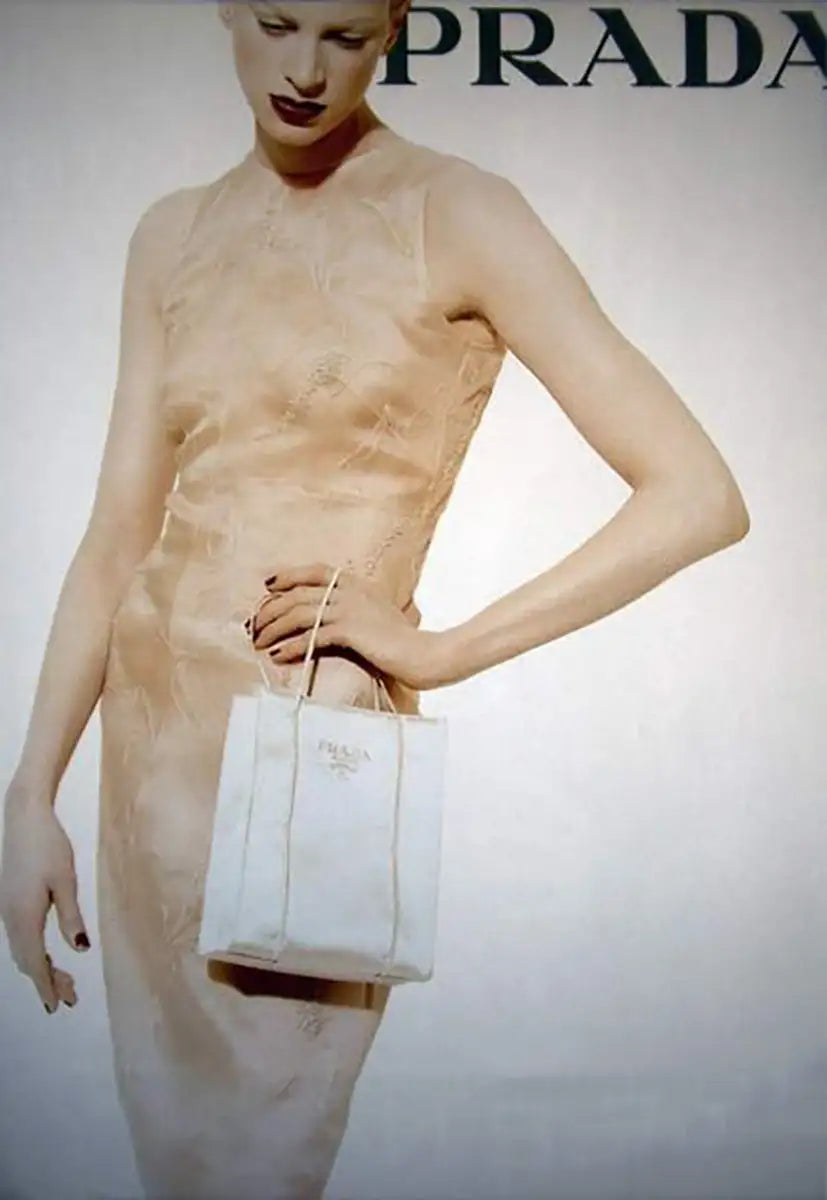
PRADA TODAY
Miuccia is still at the head of the brand, now accompanied by Raf Simons, who is just as cerebral as she is.
Today, Prada is a giant holding with several labels under its umbrella and numerous stores around the world, all designed by the most famous internations architets including Herzog & De Meuron and Rem Khoolas.
The Prada Woman and the Prada Man, despite having become slightly posh, do not forget where they come from, and when dressing Prada meant dressing non-conformism.
Prada bag in gray leather
- Regular Price
- $861.00
- Sale Price
- $861.00
- Regular Price
-
- Unit Price
- Translation missing: en.general.accessibility.unit_price_separator
2010 Prada espadrilles in burgundy-colored open toe canvas with wedge
- Regular Price
- $239.00
- Sale Price
- $239.00
- Regular Price
-
- Unit Price
- Translation missing: en.general.accessibility.unit_price_separator
Y2K Prada black cropped woollen pants with buttons on the front
- Regular Price
- $171.00
- Sale Price
- $171.00
- Regular Price
-
- Unit Price
- Translation missing: en.general.accessibility.unit_price_separator
2010 Prada lace-up shoes with espadrilles style wedge
- Regular Price
- $299.00
- Sale Price
- $299.00
- Regular Price
-
- Unit Price
- Translation missing: en.general.accessibility.unit_price_separator
Prada Python print overcoat
- Regular Price
- $897.00
- Sale Price
- $897.00
- Regular Price
-
- Unit Price
- Translation missing: en.general.accessibility.unit_price_separator
Prada Pyramid Handbag
- Regular Price
- $956.00
- Sale Price
- $956.00
- Regular Price
-
- Unit Price
- Translation missing: en.general.accessibility.unit_price_separator
Prada Pink Wool Long Gloves
- Regular Price
- $239.00
- Sale Price
- $239.00
- Regular Price
-
- Unit Price
- Translation missing: en.general.accessibility.unit_price_separator
Prada Black Combat Boot
- Regular Price
- $299.00
- Sale Price
- $299.00
- Regular Price
-
- Unit Price
- Translation missing: en.general.accessibility.unit_price_separator
Prada Wool Coat
- Regular Price
- $777.00
- Sale Price
- $777.00
- Regular Price
-
- Unit Price
- Translation missing: en.general.accessibility.unit_price_separator
Prada Crocodile Bauletto Bag in Dark Brown Crocodile Leather
- Regular Price
- $9,560.00
- Sale Price
- $9,560.00
- Regular Price
-
- Unit Price
- Translation missing: en.general.accessibility.unit_price_separator
Prada Pink Snakeskin Key Case
- Regular Price
- $192.00
- Sale Price
- $192.00
- Regular Price
-
- Unit Price
- Translation missing: en.general.accessibility.unit_price_separator
Prada Short Sleeved Geometric Shirt
- Regular Price
- $419.00
- Sale Price
- $419.00
- Regular Price
-
- Unit Price
- Translation missing: en.general.accessibility.unit_price_separator
Prada Wool Argyle Sweater
- Regular Price
- $419.00
- Sale Price
- $419.00
- Regular Price
-
- Unit Price
- Translation missing: en.general.accessibility.unit_price_separator
Prada Short-Sleeved Wool Argyle Sweater
- Regular Price
- $383.00
- Sale Price
- $383.00
- Regular Price
-
- Unit Price
- Translation missing: en.general.accessibility.unit_price_separator
